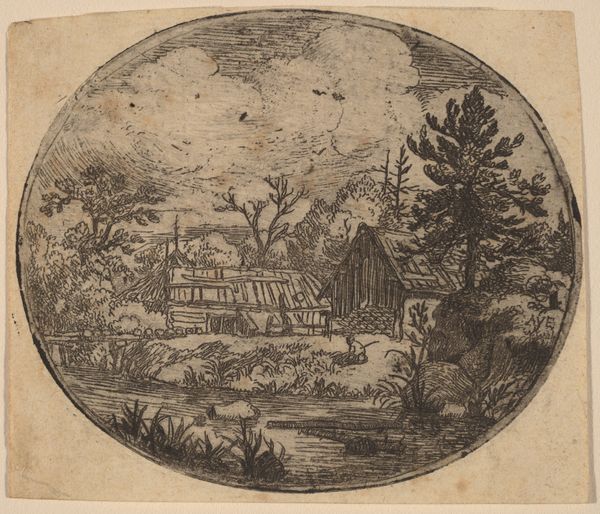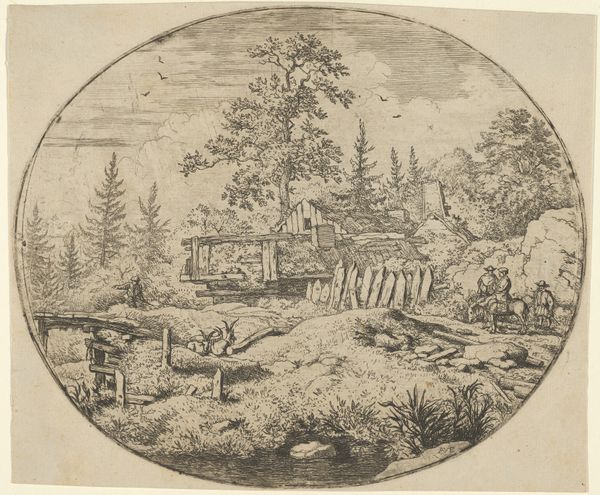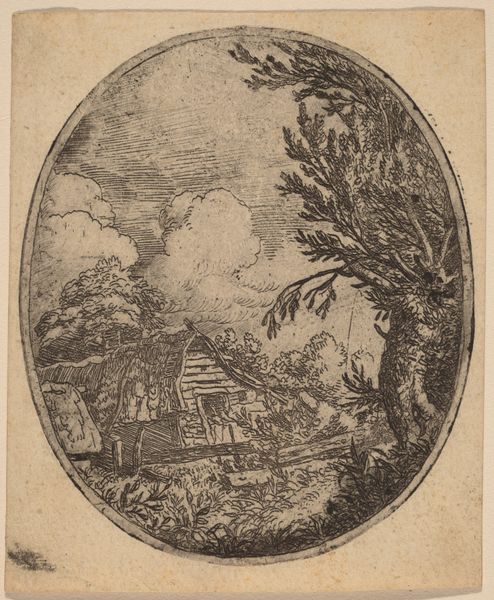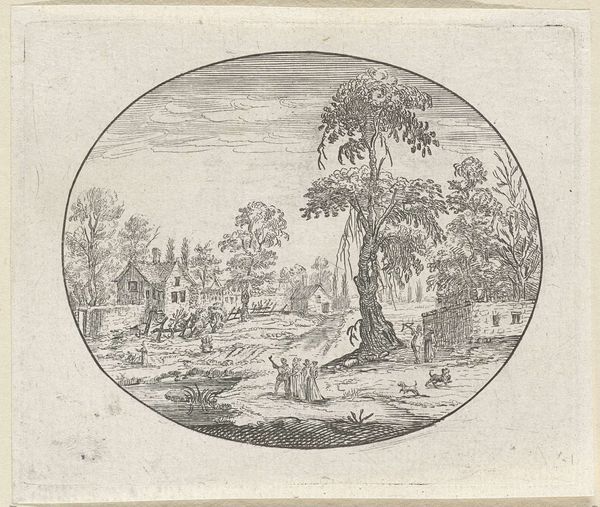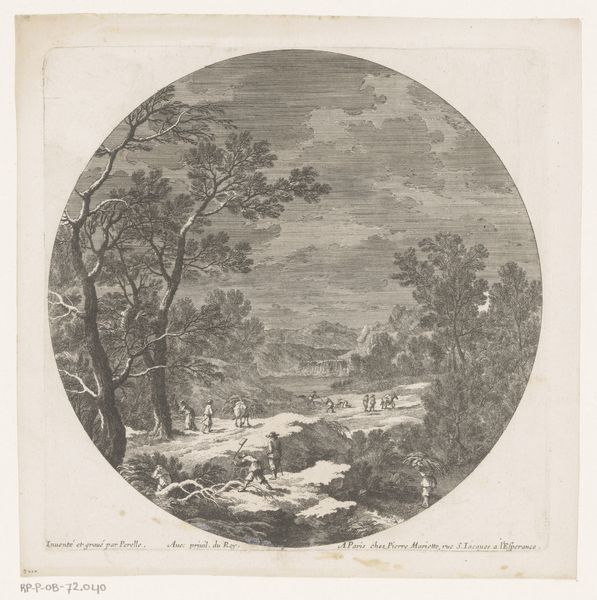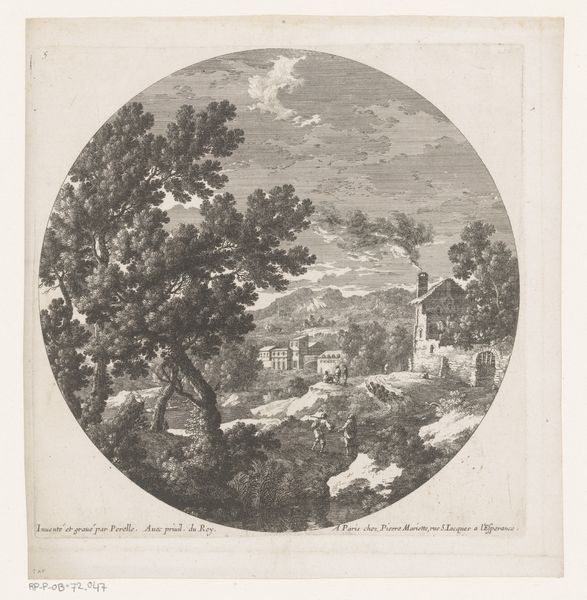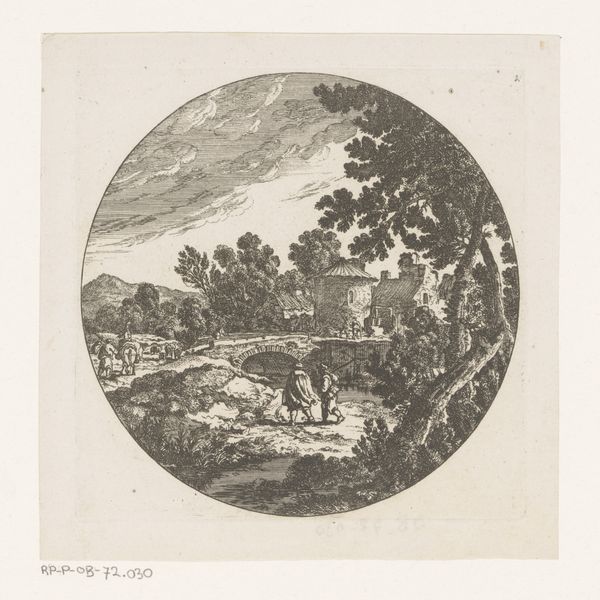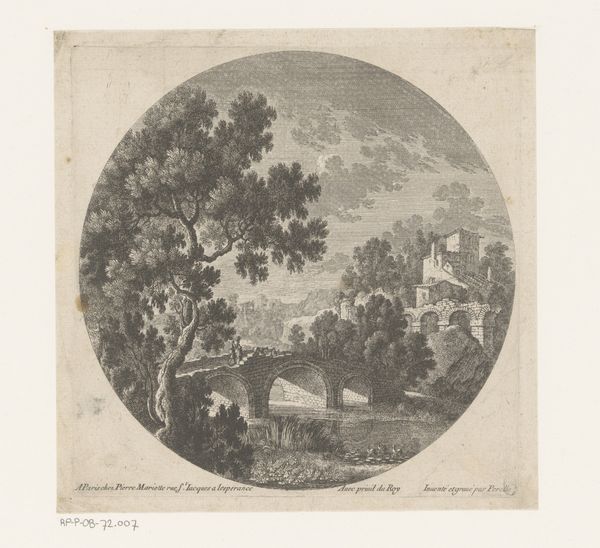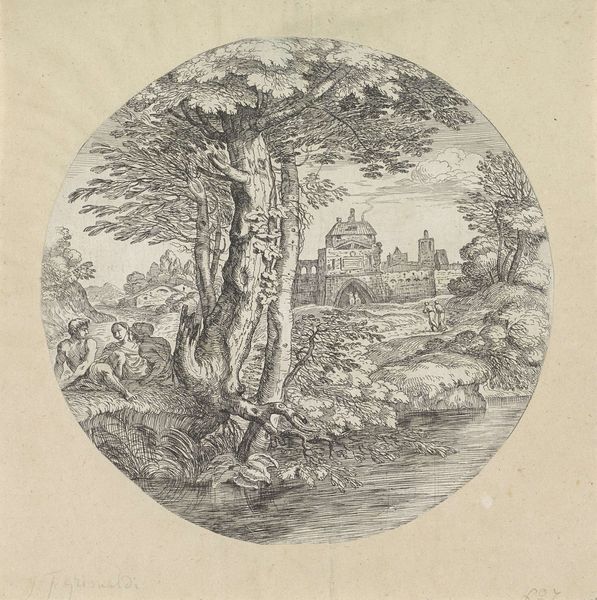
print, etching, ink, engraving
#
ink drawing
#
dutch-golden-age
# print
#
etching
#
landscape
#
ink
#
engraving
Copyright: National Gallery of Art: CC0 1.0
Allart van Everdingen made this etching, Hamlet at the Bank of a River, in the Netherlands, sometime in the mid-17th century. At this time, Dutch artists turned away from the grand historical and religious scenes that had dominated European painting and began to focus on the landscape and the everyday lives of ordinary people. This image creates meaning through its depiction of a simple, unadorned scene. The thatched roof of the hamlet suggests the rustic life of the countryside. The river and the trees evoke a sense of natural beauty. The presence of the hamlet also suggests the growing importance of local communities during this period. We can only speculate about the extent to which the image presents an idealized view of Dutch rural life. In the cultural context of 17th-century Holland, this shift towards more familiar imagery can be seen as reflecting a new sense of national identity and civic pride. By studying the landscapes that inspired artists like Van Everdingen, we can gain a deeper understanding of Dutch society.
Comments
No comments
Be the first to comment and join the conversation on the ultimate creative platform.
